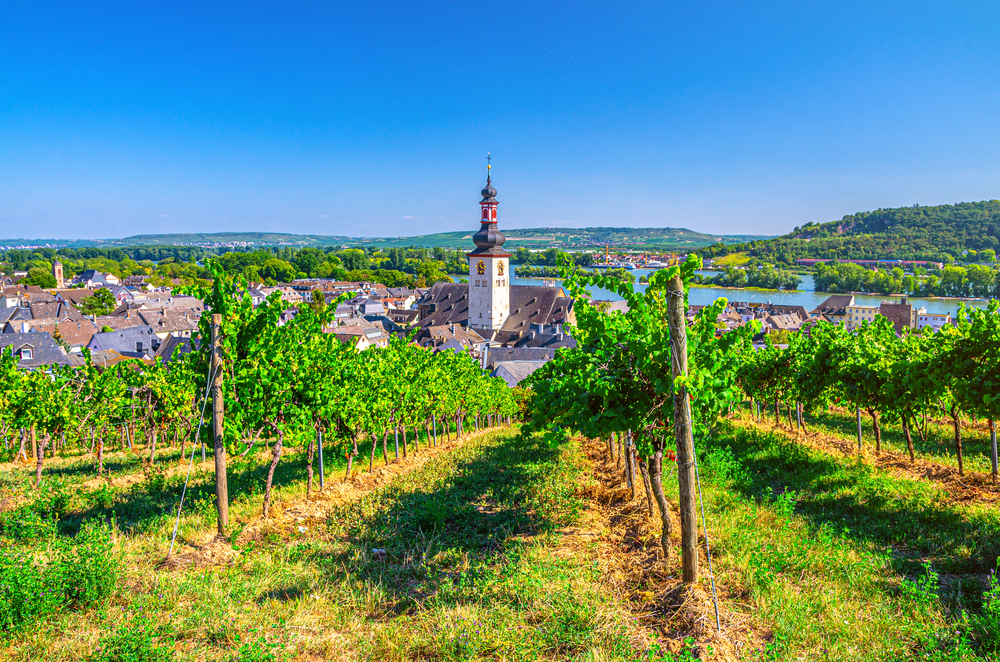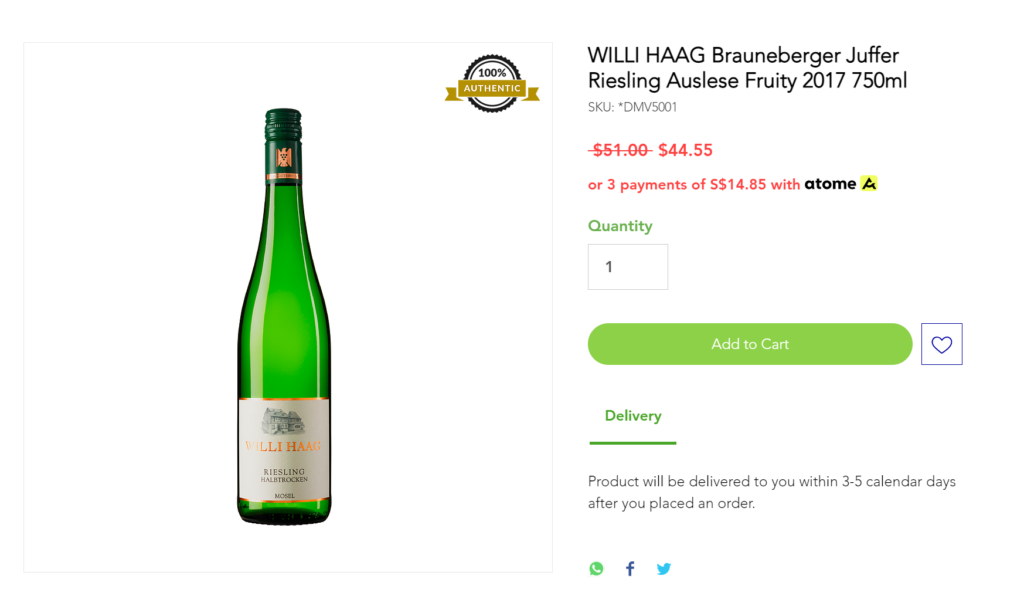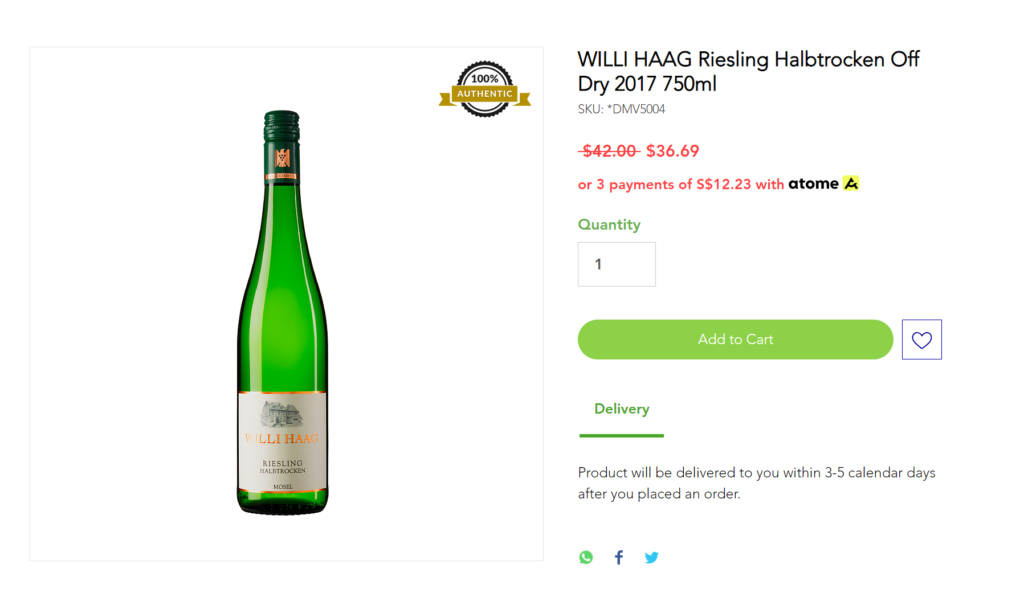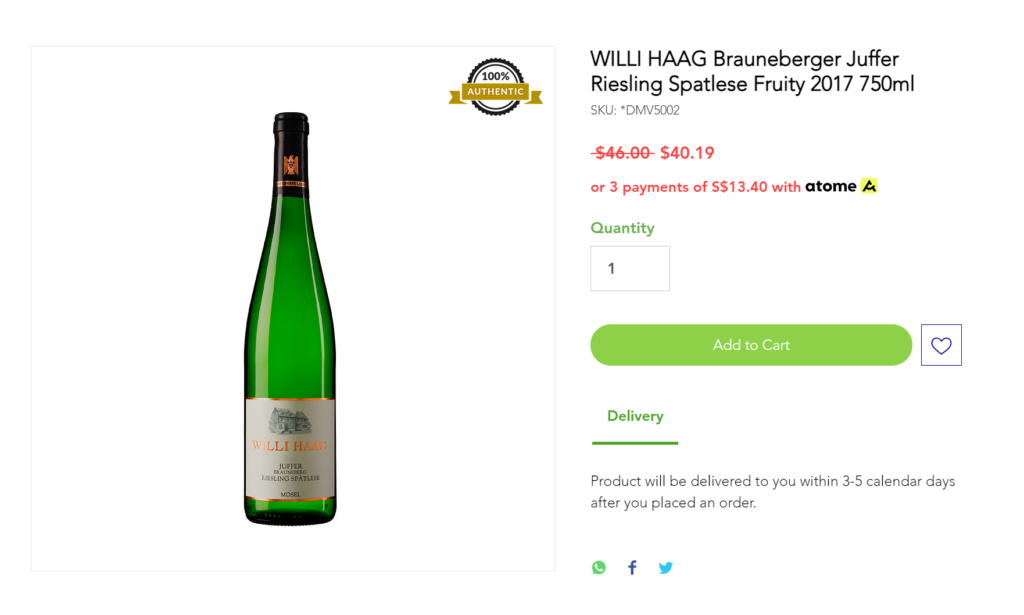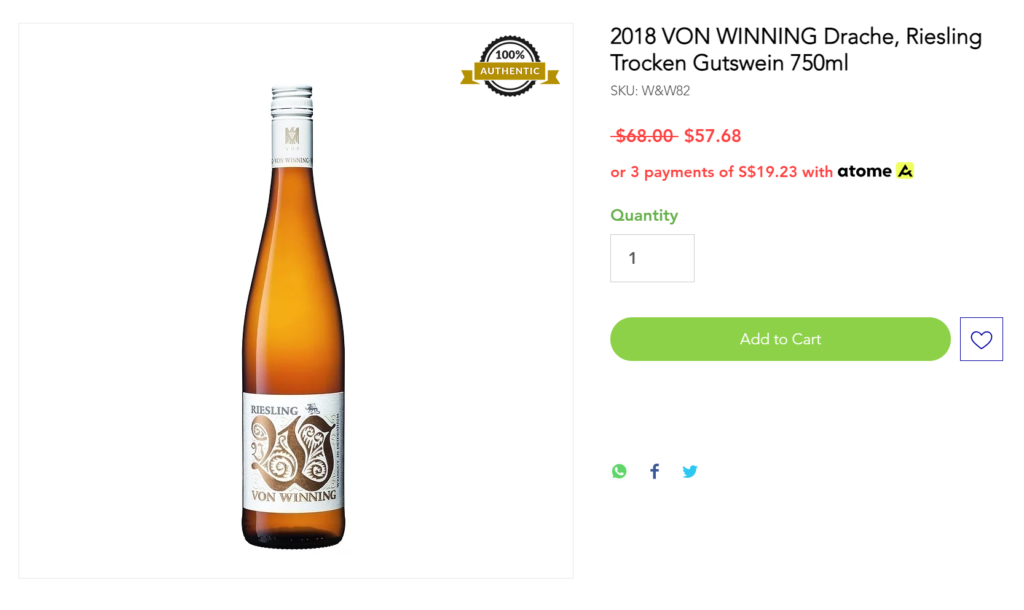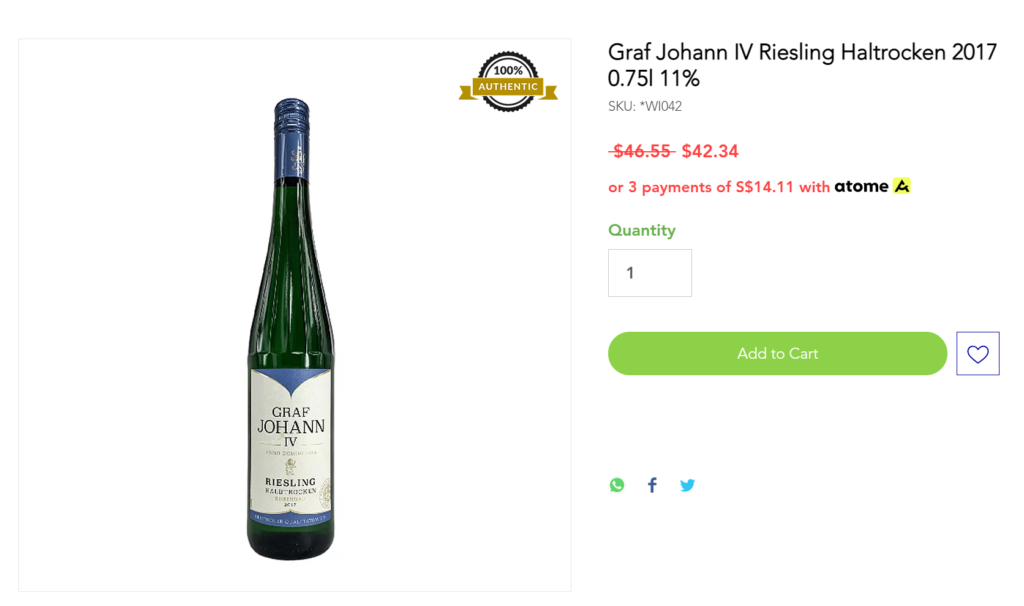Bratwurst, pretzels, sauerkraut, and beer are the heart of German cuisine. But in the wine department, Germany is near-synonymous with Riesling.
Germany’s signature wine: Riesling
One can confidently say that Germany is home to the Riesling. Yet this white grape variety is probably the most debated varietal of all.
Regular plantings of Riesling can be as plain as any other table white wine, but in Germany, where the grape likely originated, certain appellations are among the most regulated and protected vineyards in the world.
For climate reasons, the majority of German wine is produced in the country’s warm southwest. Climate and temperature are moderated by the Rhine and Mosel rivers, which run through wine-producing regions. Most German wine is white, as you may have guessed. White wine accounts for two-thirds of German wine production, with Riesling accounting for 20 percent.
What does riesling taste like?
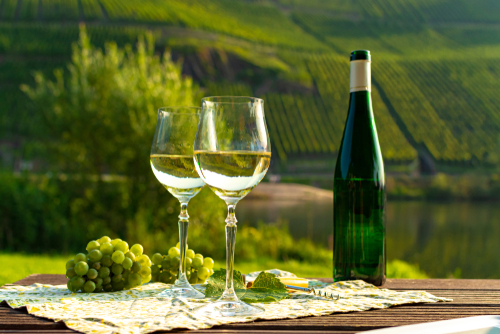
Not. All. Riesling. Is. Sweet!
Riesling’s most remarkable trait is now it responds to terroir. It is mostly trocken (the German word for dry) and high in acidity. In fact, over 60% of all wine made in Germany is classified as dry or off-dry, and Riesling is no exception.
Dry (and even off-dry) Riesling is fresh and aromatic, perfect for drinking with or without food.
Here are 5 Riesling from Germany perfect for your next happy hour!
1. WILLI HAAG Brauneberger Juffer Riesling Auslese Fruity 2017
The Haag family has been resident in Brauneberg since 1500. Their wines come from the world-famous vineyards Brauneberger Juffer, Brauneberger Juffer-Sonnenuhr or Piesporter Goldtröpfchen.
Marcus Haag, Willi Haag’s grandson, has been in charge of the cellars since 1995, and his wines reflect the terroir perfectly – luscious and rich wines from the Juffer vineyard, while Juffer-Sonnenuhr demonstrates grace and good structure with citrus aromas.
The keyword here is Auslese which means specially handpicked fully ripen Riesling grapes. Therefore, the alcohol content is lower at about 7.5%, this bottle is elegant and fruity with notes of honeyed citrus, peach, lime peel, rose petals and orange blossom.
Best consumed on its own, or paired with shellfish, poultry and spicy food.
2. WILLI HAAG Riesling Halbtrocken (off dry) 2017
This famous Mosel Riesling is made from vineyards that are 40 years old. On the palate, flavours of spicy pear and honey with hints of green apple continue. It’s energizing and spicy while remaining lusciously fruity, with a lengthy slatey, mineral aftertaste.
3. WILLI HAAG Brauneberger Juffer Riesling Spatlese Fruity 2017
Spatlese means late harvest wine in german. It is typically is medium-bodied with complex flavour. This rich, mouth-filling wine is perfumed with wax, smoke, hibiscus flowers, and tropical fruits. Sweet-tart tangerine and peach flavours are juxtaposed with racy lemon-lime acidity and savoury notes of pine frond and pollen.
Best paired with shellfish, poultry and spicy food.
4. Von Winning Drache, Riesling Trocken Gutswein 2018
Weingut von Winning was founded in 1849 and is one of Germany’s oldest and most distinguished wineries. Dragon (Drache) is a stainless steel fermented Riesling. Produced naturally without herbicides or synthetic fertilisers used in the vineyard, no fining, no pumping, and no filtration. The grapes are grown in the valleys that run beneath Forst and Deidesheim.
Tropical fruits, green apples, gooseberries, lemongrass, and limes dominate the nose. The palate is delectable, robust, and really wonderful. Mineral, fruity, with enamel, strength and elegance.
5. Graf Johann IV Riesling Halbtrocken 2017
The wine “Graf Johann IV” Riesling Halbtrocken is made from high-quality Riesling grapes grown on shale and alluvial soils on the Rhine’s banks, under the influence of a mild, almost Mediterranean climate. The region’s wine-making traditions were established in the early Middle Ages on monastic farms. The Rheingau winemakers’ centuries-old traditions and high reputation helped them become suppliers to Europe’s noble families. In the Rheingau, the Institute of Wine and Enology has also opened its doors. It is unique in the world and lends Räingau significant weight and authority as a wine region.
The wine is named after Count Rheingau – Johann IV Katzelenebogen – who ordered the planting of 22 vines of a new grape variety in one of his vineyards in 1435. Riesling was the name given to the new variety. So Johann IV etched his name in the history of the greatest white grapes, and his estates in the Rheingau are still referred to as the “Riesling’s cradle.”
The taste of Graf Johann IV Riesling Halbtrocken (half-dry) wine has a soft, delicate flavour with a smooth texture, citrus and floral notes, spicy sourness, and a clean, long aftertaste.
German wine terms to know when you’re shopping for Riesling:
German wine labelling can be a bit of a mystery. Some Riesling may have the word Riesling on the label, but this is not always the case, even for the same producer.
There are a couple of terms that indicate the sweetness of the wine. The following are some of the more common and useful ones:
Trocken and Feinherb – Indicate a dry wine
Kabinett – Light wines that are dry to medium sweet, but still crisp
Spatlese – Late harvest wine, usually medium sweet and riper flavours
Auslese – Specially handpicked grapes, fully ripe. Ranging from off-dry to sweet
Beerenausele / Trockenbeerenuauslese – Meaning ‘berry selection’ and ‘dried berry selection’. Not to be confused with dry trocken, these wines are lusciously sweet made with botrytised grapes, rare and expensive like Sauternes.

